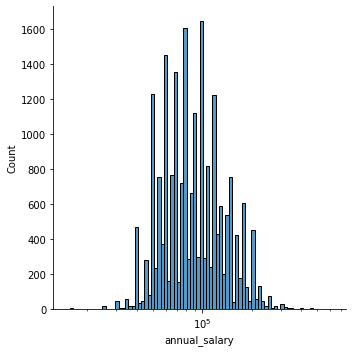Normalising Salary
Salary ranges come in many forms; how can we convert them to a common form? A first approximation is to annualise them; it ignores the difference between full-time, part-time, and temporary work.
The other question is how to pick the range, for jobs with a bery large range. I started with the minimum because the maximum is often an inspirational nubmer (especially in commission sales roles).
The way I approached this was:
- Look for anomalies (e.g. salaries where minimum is more than the maximum)
- For salaries with a period (e.g. hourly, daily, or annual) look at the range of common salaries
- Remove any data with wrong ranges due to issues in the data or in the parsing
- For salaries without a period, infer the period from the range (ignoring when it’s ambiguous)
- Divide out the period (inferred or actual) to get the annualised salary.
For example by looking at the data I can see for Australian jobs annual salaries should be above $10,000. Daily salaries are above $100 and hourly salaries below $200; between $100 and $200 it’s ambiguous depending on the kind of role. But below $100 it’s unambiguously hourly. This approach could be applied to different markets and currencies I’m less familiar with.
I used the TDD approach to parsing salary, which allowed me to improve it and the tests caught some regressions I would have introduced.
After removing the out-of-band result and annualising I got a reasonable result:

I undoubtedly removed some results that are valid, or that could be corrected, but this was an effective way of getting a lot of the valid data with a little work. I’ve got a Notebook showing the approach (raw).